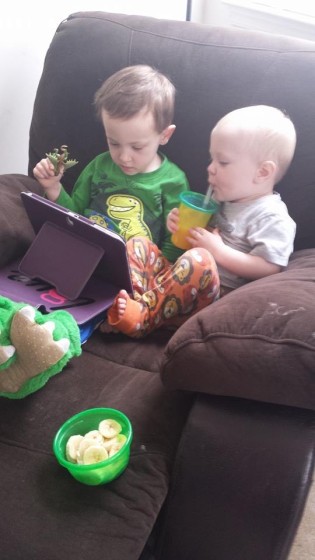
Technology, used correctly, has the ability to level the playing field and open doors for all children, regardless of race, socioeconomic status, life experiences, background, or exceptionalities. And so I find myself driven to ensure that all policy makers, educational leaders, teachers and parents with whom I work have the technological vision and skills they need to unleash the unlimited potential in the children under their watch.
We can’t educate students who have been raised in a world of instant, interactive information by simply thinking up clever ways to use computers in the typical row-and-column classroom activities. What Roland Barth calls the “cemetery method”… neat rows and very still.
We have to ask ourselves what principled changes are we making in our districts, schools and classrooms that guarantee we are developing the #futureready skill set these students will need as they face the challenges of the future- their future.
Are the current curricular strategies we are using helping those we mentor become future scientists, historians, mathematicians, technologists, risk takers and imagineers who will problem find and solve the social ills of the society of the future?
Are we developing skills such as:
- Personal and social responsibility on and offline
- Planning, critical thinking, reasoning, and creativity expressed in both traditional and contemporary means
- Strong communication skills with a global emphasis
- Cross-cultural understanding
- Visualizing, design driven problem solving and decision-making
Owning the culture shift
Superintendents and other district leaders have to own the culture shift they want to see in their schools. Owning the vision themselves is mission critical before they can give it away and instill it in others. Owning it includes seeing how the digital transition aligns with every other aspect of your strategic plan. Once you own the vision you can give it away to others to implement by using collaborative leadership techniques that both develop and support a shared vision, mission and adoption of core values across all school stakeholders.
I am always so surprised when I work with district leaders that don’t even know their vision/mission or worse where to find it. Collaborative leadership, underscored by a commitment toward developing a strong leadership density in all community members around the shared vision, should be seen as *the* means to successful digital learning transition for students and teachers alike.
The truth is none of us can give away what we do not own ourselves. Spilling out rhetoric you hear others say on Twitter or at your favorite tech conference will not change anything on the global scale needed in your district, school or classroom. Rather you have to own it, personally first.
Ask yourself, How important is it for someone in your position to model technology use? How do you do that? Do you understand effective ways to learn using social media, digital tools, and devices? Can you share/show how to embed deep learning into transparent use of technology and other connective tools in a classroom setting? If not, why not?
As future ready leaders you need to be present guiding, celebrating and nurturing the culture of change you want to see established. But first you have to own it, then you can give it away to faculty and they in turn can give it away to their students.
Latest posts by Powerful Learning Practice (see all)
- Hurry, you do not want to miss out on this… - November 3, 2020
- Resist the Urge to Quit Prematurely - October 26, 2020
- Let’s Move Past Feeling Disconnected from Your Students. Words Matter - October 24, 2020

